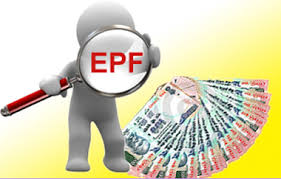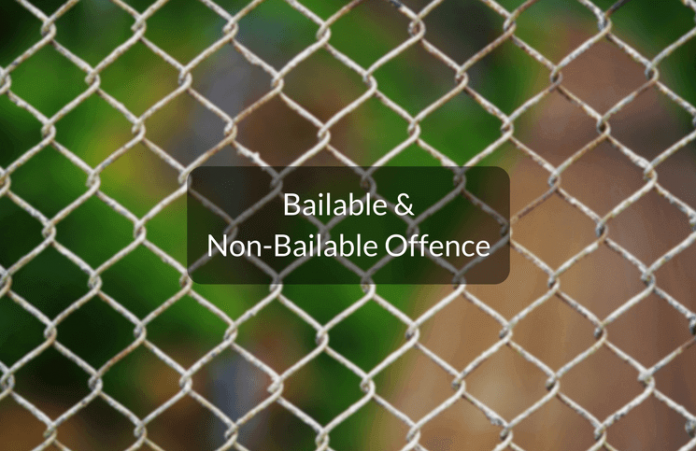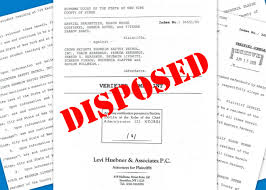
Introduction
A Provident Fund is a scheme developed by the Central Government which gives financial security to employees after their retirement. It is the part of employee salary structure. As per the scheme, a percentage from employee’s salary is deducted and added to his provident fund account every month and his employer would also require contributing the same percentage of the amount to the employee’s provident fund account. In India, there are three types of provident funds, i.e., Public Provident Fund for the public, Employees Provident Fund (EPF) for private sector employees and General Provident Fund (GPF) for Government employees.
Employee Provident fund (EPF)
The Employee Provident Fund (EPF) is governed by Employee Provident Fund Organization (EPFO), a statutory body under (Labour Ministry) Ministry of Finance, India. It helps private sector employees to save a small portion of their salary every month. This scheme helps them to fabricate a corpus which is duty excluded for use in the fag end of their lives or retirement. Employee Provident Fund is a long haul reserve funds apparatus, fundamentally went for a calm retirement, salaried representatives may pull back their cash in their EPF record to take into account diverse budgetary prerequisites or at the season of any real life occasions, for example, weddings, home remodel/adjustment and medicinal treatment among others. The amount is deposited at the Employee Provident Fund Organization (EPFO). The investments made by a number of employees are pooled together and invested by a trust. EPF covers following three schemes.
- Employees’ Provident Fund Scheme, (EPS) 1952
- Employees’ Pension Scheme, 1995 (replacing the Employees’ Family Pension Scheme, 1971) (EPS).
- Employees’ Deposit Linked Insurance Scheme, (EDILS) 1976.
As per Employees Provident Fund Act, rules and regulations, 12% of the basic pay of a salaried employee (in addition to dearness allowance and cash value of food allowances, if any) is deducted from his or her salary on a monthly basis as a contribution towards an EPF account. However, an employer contributes 8.33% in the Employee Pension Scheme (EPS) while only 3.67% is deposited in the Employee Provident Fund account. The current rate of interest on provident fund deposits (for the financial year 2016-17) for an EPF account is 8.65% p.a. The rate of interest is subject to change every year, as announced every year by Employee Provident Fund Organization apex body.
All associations which have hired more than 20 employees ought to obligatorily enrol with EPFO. To make the ideal utilisation of the EPF account, salaried representatives must know about what a provident reserve account involves and how it is worked.
As per the EPF Scheme withdrawals are not permitted from the EPF account until the worker has stopped working or is independently employed. The money from the EPF account can be withdrawn if the employee doesn’t have any job. PF exchanges are permitted if the holder changes employments. If an employee decides to withdraw money from his EPF account after quitting the job, he needs to submit a declaration mentioning the reasons for the same.
Employee Provident fund (EPF) withdrawal Rules
The Employees Provident Fund scheme has become the retirement saving scheme in the true sense. The Labor ministry of India issued a gazette notification about the changes in withdrawal rules EPF Act, with effect from 10th February 2016 but it was withdrawn on 19th April 2016 due to the pressure from the various trade unions. The changes brought in by the government was
- Retirement age of an employee increased from the current 55 years to 58 years.
- An Employee can withdraw 90% of EPF balance once he reaches the age of 57 years.
- An Employee cannot withdraw Employer contribution to EPF before 58 years.
- EPF membership does not end with leaving the job.
- Government plans to start online facility for EPF withdrawal in Aug 2016.
LET’S GO THROUGH THESE CHANGES IN DETAIL
Retirement age increased from the current 55 years to 58 years
As per earlier Employee Provident Fund rule, the retirement age of an employee was 55 years. From 10th February 2016, the retirement age was increased to 58 years. In today’s global scenario retirement age is 58 years across all industrial sectors, so this change is keeping in step with times.
Withdraw 90% of EPF balance once an employee reaches the age of 57 years
Earlier the retirement age of employee as per EPF rules was 55 years. Therefore one was allowed to withdraw 90% of his EPF balance one year prior to retirement i.e. at the age of 54 years. With these new rules, the age of retirement has been increased to 58 years, now the employees will not be able to claim withdrawal of their provident fund after attaining the age of 54 years. They would have to wait till attaining the age 57 years. But the change is that now under this facility, the employee would be able to withdraw 100% of his contribution and interest earned on it unlike 90% of the total accumulations earlier.
Restriction on withdrawal of Employers contribution to Employees Provident Fund before 58 years. (This new rule has been withdrawn)
As per the notification dated 10th February 2016 any person who is a subscriber to Employers Provident Fund cannot withdraw the employer’s contribution to EPF before the retirement. The employer’s portion can be withdrawn only after attaining the retirement age (58 years). It is to be noted that the withdrawals from the Employers Provident Fund within five years of joining are still taxable. The problem that the Employers Provident Fund would face is whether it would pay interest on Employer share which one is not allowed to withdraw. ‘The inoperative account rule of Employers Provident Fund says that an Employers Provident Fund account would not earn interest if there is no contribution for 3 years’. Now onwards, there would be several Employers Provident Fund account without contribution as people would not be able to withdraw their full Employers Provident Fund corpus. Will such account not give any interest after 3 years? The rule says
“A member, who ceases to be in employment and continues to not be employed with a covered establishment for at least two months, may be permitted to withdraw only his own share of contribution, including interest earned thereon. The requirement of ‘two months’ period referred above shall not apply in the case of female members resigning from the service for the purpose of getting married or on account of pregnancy/ childbirth.”
Employee Provident Fund membership does not end with leaving the job
As per the notification dated 10th February 2016 subscriber to Employees Provident Fund cannot withdraw the EPF contribution by the employer before the retirement. The employer’s part can be withdrawn after attaining the retirement age (58 years). Since one can’t withdraw the 100% of the PF balance, your Employee Provident Fund account is not closed. As per earlier Employees Provident Fund rules, the membership was linked with the employment. One becomes a member of Employee Provident Fund with the joining of a new job. Once the subscriber to Employee Provident Fund become jobless and withdraws his Provident Fund balance, the membership expires.
But now Employee Provident Fund membership would continue up to the retirement age. The Employee Provident Fund membership has become independent of the job. Since one can’t withdraw the 100% of the Provident Fund balance, the membership is bound to continue.
Withdrawal Purposes
Employees Provident Fund is an important part of most of the salaried persons. It can help one, at times when he is pressed for money in life. If any person who have already worked for years like 5-20 yrs., he must have accumulated a good amount in his Employee Provident Fund account. Such employees may withdraw money from their Employee Provident Fund accounts for various purposes, subject to certain conditions. Individuals have to furnish several documents in addition to meeting the eligibility criteria as per Employee Provident Fund withdrawal rules. The list of purposes and quantum of contribution which can be withdrawn are listed below:
SITUATIONS WHEN AN EMPLOYEE CAN WITHDRAW MONEY FROM EMPLOYEE PROVIDENT FUND ACCOUNT WHILE ON EMPLOYMENT
Hereunder are those major landmarks in life or reasons for which an employee can take out the money from his Employee Provident Fund account
- Marriage Purpose of Self, Sibling, and Children
- Education Purpose of Self + Children
- Repairs/Alteration of Existing House
- Repayment of Existing Home Loan
- Purchase/Construction of House or Flat
- For Medical Treatment
- Miscellaneous
Specific Rules for specific situations
Marriage purpose for self, children, and siblings
Any salaried employee can withdraw from his Employee Provident Fund account for the occasion of marriage if he has completed 7 (seven) yrs. of service. He can avail this facility 3 (three) times in life (during his tenure/service) and the maximum amount he can withdraw cannot be more than 50% of the “Employee share” in Employee Provident Fund account. For this purpose, part of employer’s contribution is not considered for withdrawal. So even if Employee Provident Fund account total balance is Rs 15 lacs, the whole amount is not considered for calculation purpose, only employees own contribution and interest on that amount are used for calculation purpose. This is applicable for the marriage of
- Self
- Son or Daughter
- Brother or Sister
For the purpose of withdrawal, the employee needs to provide the full address of venue, marriage date in Form 31, and also attach some proof of weddings like Marriage invitation or the bonafide certificate of the fees payable and give it to his employer for verification and processing.
Education of Self + Children
A salaried employee can also withdraw for education expenses for self and children. This is valid only for post matriculation educational expenses. By post-matriculation, it means after 10th standard. So if any subscriber is admitting his child to any college or university for graduation or post-graduation or any other professional course, he can withdraw from his Employee Provident Fund account. But this can be availed only after 7 (seven) yrs. of service and the maximum amount can be withdrawn is 50% of own contribution.
This can be used for maximum 3 (three) times in employees lifetime, but this 3 (three) times also includes the “marriage” as the reason. So the fact of the matter is, for Marriage or Education purpose, you can withdraw for maximum 3 (three) times in total.
Purchase/Construction of House/Land
If a salaried employee plans to buy or construct a house OR purchase a land, then he is eligible to withdraw some limited money from his Employee Provident Fund account once in a lifetime.
HERE ARE SOME OF THE RULES WHICH NEED TO FULFILLED
- The house/land should be on employees name or his/her spouse name or jointly in their name i.e. employee and his/her spouse (no other combination is allowed)
- Employee should have completed 5 yrs. of tenure in his employment
- If purchasing a land, the maximum permissible amount is 24 times of monthly wages.
- If purchasing or constructing a house/flat then, the permissible limit is 36 times of monthly wages (including the acquisition of land also)
The property in question should be free from any dispute or encumbrances to avail this facility. Also, the property should be registered and a proof of registration must be given to get this facility.
Repayment of Existing Home Loan
If an employee has a home loan, then he can withdraw some part of his/her Employee Provident Fund money to repay his home loan. But for this purpose, the employee needs to have minimum 10 yrs. of service. This facility is available only once in his/her lifetime and this time limit is, clubbed with the above- mentioned reason (3rd) above. Therefore one can either withdraw money from Employee Provident Fund account for purchase/construction of house or repayment of house loan, not both.
The property should be registered in the name of self, spouse or jointly registered with a spouse. The employee won’t get the benefit if the loan is taken jointly with father, mother, and siblings. The maximum amount one can withdraw is up to 36 times of monthly wages. The money to be received under this clause can be taken from self-contribution and employer contribution in Employee Provident Fund. To get the money under this clause one needs to provide the proof for house agreement, the sanction of house loan and some other documents as asked by the Employee Provident Fund Organization (EPFO) office. The money will be issued directly to the lender bank.
Repairs/Alteration of Existing House
If a salaried person wishes to withdraw from an Employee Provident Fund account for the purpose of house renovation or alteration, he needs to follow certain rules regarding this purpose. These rules are
- The maximum money employee can withdraw is 12 times of his/her monthly wages
- The house should be more than 5 yrs. old after construction completion date.
- Employee should have completed minimum 10 yrs. of service
- Employee can avail this facility only once
- The house should be in the name of self, spouse or jointly with spouse
For the above purpose, money can only come out of employees own contribution, not employer’s contribution
Medical Treatments
A salaried person can withdraw money from his Employee Provident Fund account for a medical treatment for self, parents, spouse and children in following 3 situations (anyone, not all)
- More than I month of hospitalisation (for any reason), or
- Major surgical operation in a hospital, or
- If one is suffering from T.B., leprosy, paralysis, cancer, mental derangement or heart ailment and having been granted leave by his employer for the treatment of the said illness.
The benefit of this clause is that one can withdraw the money anytime in his service tenure. There is no requirement that, one must have completed a minimum/specific number of years in service/job. Even if one has been in service for just 1 yr. or 2 yrs., he can still withdraw money for medical treatment. The maximum money can be withdrawn is 6 months wages. This benefit can be taken anytime and for any number of times during a lifetime.
THERE ARE SOME DOCUMENTS WHICH NEED TO BE PRODUCED AND SUBMITTED ALONG WITH FORM 31
- A certificate from an employer stating that member is not getting the benefit of Employees’ State Insurance Scheme facility
- A certificate from an eligible doctor stating the medical illness to the member and time period for which hospitalisation is required.
Miscellaneous
Every employee subscribed to Employees Provident Fund scheme can choose to withdraw from their Employees Provident Fund account for other reasons as well
- Premature retirement due to any physical or mental disability
- Going abroad for the sake of better employment or
- Settling down in a foreign country.
Tax Implication on Employees Provident Fund Withdrawal
Tax on Employees Provident Fund money withdrawal is the main concern of the employees who leave early. Most of us know about the tax-free nature of Employees Provident Fund. The Employee Provident Fund is also considered most reliable retirement corpus. There is no chance of default. Subscribers will get a better interest rate and no one can take away provident Fund corpus. Beside this Provident Fund is totally tax exempt. We have a common perception that Employees Provident Fund does not have any tax tension.
But, very few of us know that the Provident Fund corpus can also be subject to the ‘tax cut’. Provident Fund balance can be reduced by 34.6%. One may only get 65.5% of Provident Fund money. The TDS (tax deducted at source) can dent PF balance severely. There is a provision of the tax on the premature withdrawal of Employees Provident Fund.
Tax Treatment of Different Provident Funds
There are four types of provident fund, which give tax concession. The following table has been taken from the Income tax website. The table shows the tax treatment of provident funds. Please do read the note given below the table.
| Statutory Provident Fund | Recognized Provident Fund | UN-recognized Provident Fund | Public Provident Fund | |
| Employer’s contribution | Exempt from tax | Exempt up to 12% of salary (Note 1) | Exempt from tax | Employer does not contribute to such fund |
| Employee’s contribution eligible for deduction u/s 80C | Yes | Yes | No | Yes |
| Interest credited to the said fund | Exempt from tax | Exempt from tax if the rate of interest is upto 9.5%. Interest in excess of 9.5% is charged to tax. | Exempt from tax | Exempt from tax |
| Amount received at the time of termination of service | Exempt from tax | If certain conditions are satisfied, then lump sum amount is exempt from tax
| If certain conditions are satisfied, then lump sum amount is exempt from tax | Exempt from Tax |
NOTE
Salary for this calculation includes the following components
- Basic salary,
- Dearness allowance
- Commission based on a fixed percentage of turnover achieved by the employee.
Tax Benefit of Employees Provident Fund
As mentioned in the table, the Employees Provident Fund enjoys many tax benefits. The Employees Provident Fund saves your tax in following ways:
- Employer’s contribution to Employees Provident Fund account is exempt from tax. This exemption is subject to 12% of employee’s basic salary plus DA.
- The interest on employer’s contribution is also exempt from tax.
- The employee’s contribution toward Employees Provident Fund is also eligible for tax deduction under section 80C of the Income- tax Act.
- The interest on the employee’s contribution is also tax exempt.
Tax Benefit Is Subject To Minimum Service Requirement
An investment which gives tax deduction comes with a lock-in period. Except for the ELSS, all other tax saving investments has a minimum lock- in period of 5 years. So is the case with Employees Provident Fund. The investment in Employees Provident Fund may give tax benefit up to 30%, but it depends upon the tax slab one has been in all previous years.
Therefore, if employee/s does not complete the minimum investment requirement of 5 years, the above tax exemption and deduction would be void.
Return Back of EPF Tax Benefit
If any employee withdraws from Employees Provident Fund balance before 5 years’ service all his tax saving will become null and void.
- The person has to return back the tax deduction because of the employee EPF contribution. The employee must have taken the 80C tax benefit on the EPF contribution. It is also calculated financial year wise
- The interest on PF contribution will become the part of other income. It would be added in the tax calculation of every financial year.
TDS on Employees Provident Fund
The new TDS rule of Provident Fund is painful for most of the employees as the percentage of TDS can be deducted are 34.6%. In Income- tax it is said to be the maximum marginal rate. The 34.6% tax is huge, that too of Employees Provident Fund corpus. It would be really very frustrating if one gets Employees Provident Fund money after such a big deduction.
Conditions of TDS on Employees Provident Fund Withdrawal
The Employee Provident Fund Organization (EPFO) can deduct tax at source (TDS) only if an employee falls under the following two criteria.
- The employee has not completed total 5 years of continuous service.
- The EPF withdrawal amount is more than 50,000. (Earlier this limit was Rs 30,000).
Explanation
‘5 years of continuous service mean aggregate service’. The person may have worked in different organisations, but total service period should be more than 5 years. However, the following points should be considered while calculating the continuous period of service.
- The employee must have transferred the Provident Fund balance of the previous organisations. If you have withdrawn the PF balance of previous employment, the service period of the employment is not considered for continuous service.
- Employee’s previous service period would not be added to recent service period unless he transfers the previous Provident Fund balance.
However, one can minimise or avoid TDS on Employees Provident Fund withdrawal if you fulfil some requirements
Relaxation of TDS from Employees Provident Fund withdrawal
- If employee has submitted PAN
- If an employee has given the PAN, the TDS would be 10% instead of 34.6%.
- If Employee has submitted Form 15G/ 15H
If an employee submits form 15 G with the Employees Provident Fund withdrawal form, the TDS would not be applicable. The form 15G/15H is a self-declaration that total income (including Employees Provident Fund corpus) is within the tax- free limit.
No TDS for Most of the Employees
A number of employees leave the job after 5 years of service. Therefore, they need not worry about the TDS of Employees Provident Fund. The following points need to be remembered:
- The Employees Provident Fund maturity amount is tax-free if one is engaged in the continuous service of more than 5 years.
- If the service termination is beyond employees control. If you are out of a job because the lockout, retrenchment or medical condition, the rule of TDS would not be applicable.
Suggestions
Ways to Avoid Tax on Employees Provident Fund Withdrawal
Early Provident Fund withdrawal can leave the salaried person in a heavy tax burden. Besides this, there are other hassles as well. But if one plans properly, tax and hassles can be avoided
- One must avoid withdrawing Employees Provident Fund after every job switch. This might compel the person to pay tax after every withdrawal. Instead, Provided Fund transfer will save tax.
- If one is taking a small break from the job, don’t withdraw the Employees Provident Fund balance. One can transfer the Employees Provident Fund balance after joining the service again. A Provident Fund account gives interest till 3 years of non-contribution.
- If one is leaving a job and switching to a business or profession. Wait for completion of 5 years.

 (+91) 022-22640051
(+91) 022-22640051













.jpeg)
.jpeg)
.jpeg)
.jpeg)


.jpeg)

.png)